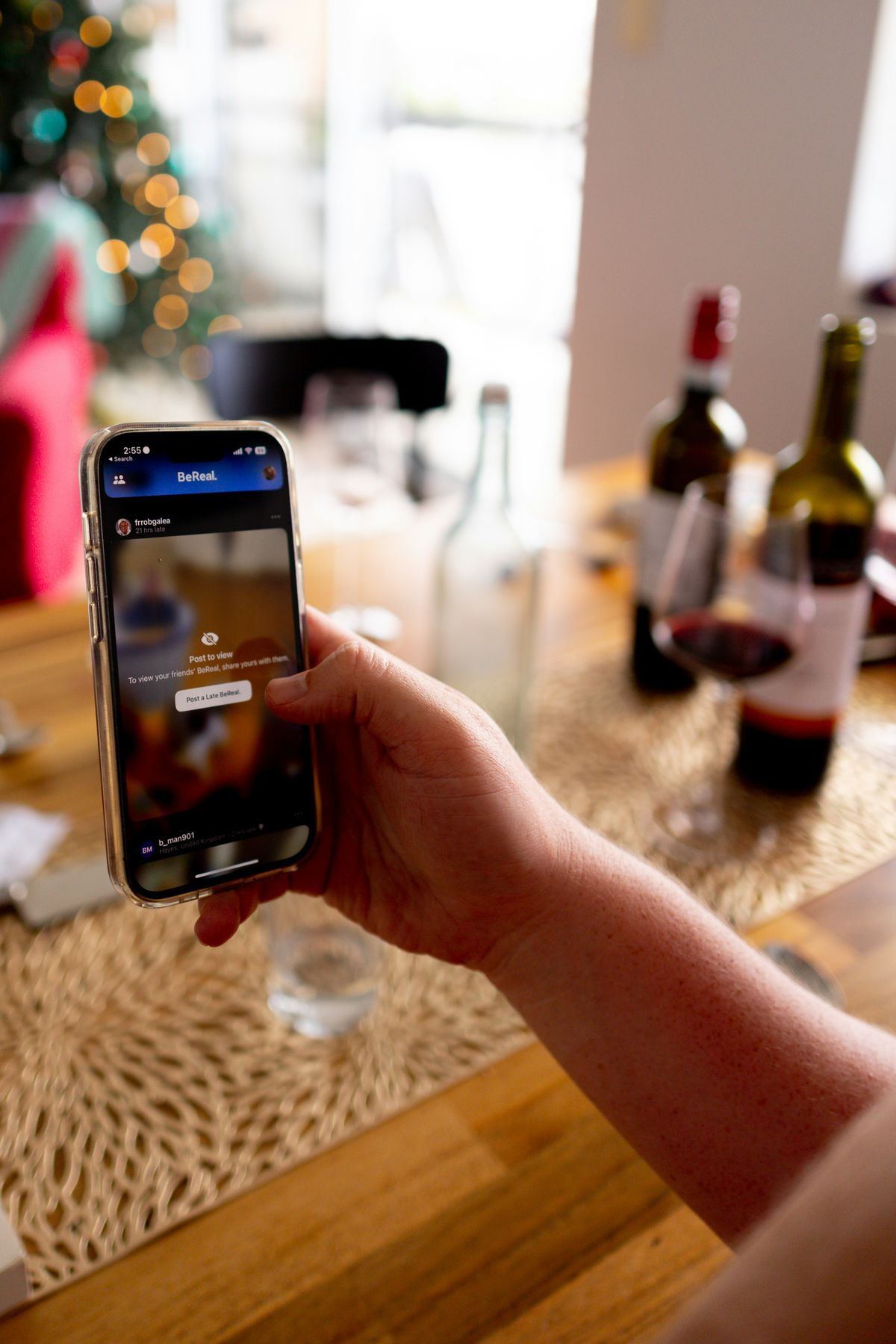Effective Strategies for Social Media Monitoring
In the digital age, social media monitoring has become a crucial task. It's not just about keeping an eye on what's being said about your brand.
It's about understanding the conversations happening around your industry. It's about gaining insights into your audience's needs and preferences.

But how do you effectively monitor social media? What strategies should you employ to get the most out of your monitoring efforts?
This guide will delve into these questions. We'll explore the tools, techniques, and best practices for effective social media monitoring.
Whether you're a business owner, a digital marketer, a concerned parent, or a security professional, this guide will provide valuable insights. Let's dive into the world of social media monitoring and discover how to use it to your advantage.
Understanding Social Media Monitoring #
Social media monitoring involves tracking various online platforms to understand brand perception. It goes beyond just checking notifications and mentions. This process involves using advanced tools and strategies to collect and analyze data.
Key elements of social media monitoring include:
- Identifying relevant keywords and hashtags
- Setting up alerts for brand mentions
- Analyzing sentiment and audience trends

These strategies help in understanding audience behavior and industry dynamics. Businesses can leverage this data to enhance marketing efforts and improve customer engagement. Effective monitoring can transform raw data into actionable insights.
What is Social Media Monitoring? #
Social media monitoring is a systematic approach to tracking online conversations. It involves watching various social networks to see what people are saying about your brand or related topics. The aim is to gather valuable data, which can guide decision-making.
Moreover, social media monitoring helps identify emerging trends and consumer sentiments. By maintaining a close watch on dialogues around your products or services, you can make informed strategic changes to your marketing tactics.
The Importance of Social Media Monitoring #
Understanding what your audience is saying is vital. Social media monitoring allows businesses to stay connected with customer needs and preferences. By actively listening, you can catch issues before they escalate and spot opportunities quickly.
Moreover, monitoring plays a significant role in managing brand reputation. Positive engagement can be amplified, while negative feedback can be addressed in a timely manner. This proactive approach aids in maintaining a strong, favorable brand image.
Setting Up Your Social Media Monitoring #
Setting up an effective social media monitoring strategy is crucial. It starts with clear goals and the right tools. Success hinges on aligning your monitoring efforts with business objectives.
First, identify the key objectives you want to achieve. This could be improving customer service or boosting brand awareness. Understanding your goals will guide your entire monitoring process.
Next, select appropriate tools and platforms that suit your needs. Numerous solutions exist, each offering different features and benefits. Choose those that align best with your goals.
Consider the following when selecting tools:
- The type of data you want to monitor
- Budget constraints
- Ease of integration with existing systems

Finally, establish key metrics and KPIs to measure success. This will help in quantifying the effectiveness of your monitoring strategy. Metrics can include brand mentions, sentiment scores, and engagement rates.
Identifying Goals and Objectives #
To lay a solid foundation, start by pinpointing your social media monitoring goals. Clearly defined objectives ensure your efforts are targeted and meaningful. Whether it's increasing engagement or competitive analysis, a focused approach yields better results.
Once goals are clear, align them with broader business strategies. This ensures monitoring efforts serve larger organizational aims. Tracking progress becomes easier, enabling swift adjustments when necessary.
Choosing the Right Tools and Platforms #
Selecting the right tools is pivotal for successful social media monitoring. Consider factors like user-interface, data accuracy, and platform support. Tools like Hootsuite and Sprout Social offer comprehensive solutions for diverse needs.
Ensure the tools you choose can integrate with existing systems. Compatibility aids in seamless data flow and better analytics. Look for features that support your specific goals and offer real-time insights.
Establishing Key Metrics and KPIs #
To measure success, establish clear metrics and KPIs early in the process. Metrics should reflect the objectives you've set. Common metrics include brand reach, user sentiment, and hashtag performance.
Regularly track these KPIs to evaluate your strategy's effectiveness. Data-driven insights facilitate informed decisions, enabling timely strategy adjustments. This ongoing process is essential for continuous improvement and tangible results.
Key Strategies for Effective Monitoring #
Effectively monitoring social media requires strategic approaches. Combining these strategies ensures a comprehensive view of your online presence. From keyword tracking to competitive analysis, each plays a vital role.
Focus on key areas that enhance your monitoring capabilities. Successful strategies often include:
- Tracking industry-specific keywords and hashtags
- Setting up real-time alerts for timely responses
- Analyzing sentiment to understand public perception
- Engaging in competitive analysis for a market edge
Integrating these strategies helps in creating a robust monitoring system. Such integration not only strengthens brand presence but also improves customer engagement and satisfaction.

Keyword and Hashtag Tracking #
Tracking keywords and hashtags is foundational in social media monitoring. It helps you understand what's trending and keeps you relevant. Identifying the right keywords allows you to capture the essence of online conversations.
Focus on those directly related to your brand, industry, or niche. Tools like Brand24 or Mention can simplify this process. Regularly update and expand your keyword list to capture emerging trends and topics.
Real-Time Monitoring and Alerts #
Real-time monitoring provides instant insights into online activities. It allows for swift responses to customer queries or complaints. Setting alerts for brand mentions and related discussions keeps you informed.
Tools like Google Alerts or Social Mention can assist in real-time tracking. This proactive approach mitigates risks and enhances customer relations. Immediate intervention can prevent minor issues from escalating.
Sentiment Analysis and Customer Feedback #
Understanding public sentiment is crucial for brand perception. Sentiment analysis categorizes opinions as positive, negative, or neutral. This helps businesses gauge customer feelings toward their products or services.
Act on the feedback received to improve customer experience. Analyze patterns in feedback to identify recurring issues. Such analysis aids in refining products and services based on customer expectations.
Competitive Analysis and Industry Trends #
Keeping an eye on competitors provides an edge in the market. Competitive analysis reveals strengths and weaknesses in rival strategies. It helps you identify gaps in your own approach and take corrective measures.
Monitor industry trends to stay ahead and innovate. Understanding these trends guides informed decision-making. Tools like BuzzSumo offer insights into competitor performance and emerging industry shifts.

Ethical and Legal Considerations #
Ethical and legal aspects are crucial in social media monitoring. Being aware of them helps maintain trust and integrity. Users are increasingly concerned about their privacy and data security.
When monitoring social media, organizations must respect privacy and protect sensitive information. Misuse of data can lead to legal complications and damaged reputations.
Focus on ethical practices to ensure compliance and trust. Maintain user confidentiality and obtain necessary consent. This is essential in responsible social media monitoring.
Organizations should consider the following to uphold ethical standards:
- Adhering to data protection regulations
- Ensuring transparency in monitoring activities
- Respecting user privacy and rights
Being conscientious about these elements can safeguard both the organization and its users.

Privacy Concerns and Data Protection #
Privacy concerns are prevalent in social media monitoring. Users expect their personal information to be kept safe. Thus, it is crucial to adhere to data protection laws.
Compliance with regulations like GDPR is essential for lawful monitoring. Implementing stringent data protection measures is a must. This helps in building user trust and loyalty over time.
Transparency and Ethical Practices #
Transparency enhances the ethical value of monitoring activities. Organizations should clearly communicate their monitoring practices. This approach fosters openness and accountability.
Being transparent involves informing users about data collection. Highlighting the purpose and scope of monitoring is key. Open communication strengthens relationships and mitigates potential backlash.
Social Media Monitoring for Different Audiences #
Social media monitoring serves various groups, each with unique needs. Understanding these audiences allows for tailored strategies. Businesses, parents, and security professionals are among the key stakeholders.
Each group employs monitoring for distinct purposes. Therefore, the tools and approaches must match their specific objectives. Addressing these needs ensures effective and successful monitoring outcomes.
Let's explore how businesses, parents, and security professionals utilize social media monitoring. Each segment has its own set of priorities and methodologies.
Businesses and brand managers focus on reputation and market trends. Parents aim to safeguard their children online. Meanwhile, security professionals concentrate on detecting potential threats.
By targeting these diverse needs, monitoring can drive meaningful results. A tailored approach is essential in addressing various social media challenges.

Businesses and Brand Managers #
For businesses, social media monitoring is vital. It helps in maintaining brand image and engaging customers. Businesses analyze sentiment to understand public opinion about their products.
Brand managers track mentions and industry trends for competitive insight. This enables them to stay ahead in their market. Monitoring social media also assists in identifying potential crises early.
Using these insights, businesses can enhance customer experiences and refine marketing strategies. Social media monitoring becomes an invaluable asset for business growth and sustainability.
Parents and Social Media Safety #
Parents often worry about their children's online presence. Social media monitoring helps ensure safety. It allows parents to watch their kids' activities discreetly.
Monitoring supports in identifying potential online threats. Parents can recognize signs of cyberbullying or inappropriate content. This knowledge empowers them to take action when needed.
However, balancing monitoring with children's privacy is crucial. Open communication between parents and children fosters trust. It creates a safer online environment for young users.
Security Professionals and Threat Monitoring #
Security professionals use social media monitoring to detect threats. This includes identifying suspicious behavior or content. Such monitoring can prevent security breaches or incidents.
By analyzing patterns and trends, they can spot potential risks. Monitoring tools provide valuable intelligence for security teams. This supports proactive measures and effective response strategies.
An adaptable monitoring system is essential for evolving threats. Regular updates and skillful analysis enhance the security professionals' ability to protect against dangers.

Analyzing and Reporting Your Findings #
Effective social media monitoring doesn't end with gathering data. Analyzing and reporting findings are crucial next steps. These processes help transform raw data into actionable insights.
Creating detailed reports allows you to understand trends, measure success, and identify areas for improvement. Visual aids and key metrics can communicate findings concisely. Tailored reporting meets the needs of diverse stakeholders.
For a holistic view, integrate qualitative and quantitative data. This approach enriches your analysis. Insights gained guide informed decision-making and strategic adjustments.
Measuring the impact of social media efforts is paramount. Establish benchmarks to evaluate performance against business goals. Remember that continuous evaluation fosters progress.
Keep evolving your strategies through learning. The social media landscape is dynamic, requiring constant adjustments. Leveraging insights for optimization ensures lasting success.

Creating Actionable Reports #
Creating actionable reports is a vital part of social media monitoring. Reports should clearly summarize key findings and their implications. Brevity and clarity are essential for effective communication.
Incorporate visual elements like charts or graphs. These visuals help stakeholders quickly grasp data points and trends. Highlight significant metrics that align with business objectives.
Actionable reports drive informed decision-making. They provide the foundation to adjust strategies and respond to emerging trends. Such insights are integral to ongoing improvement.
Measuring ROI and Impact on Business Goals #
Measuring ROI is crucial in assessing monitoring success. It connects social media efforts to tangible business outcomes. Define clear objectives and benchmarks to gauge success.
Align monitoring metrics with overarching business goals. This ensures efforts contribute directly to desired outcomes. Measurement allows optimization of strategies for greater effectiveness.
Evaluate performance regularly. Consistent assessment informs adjustments and supports goal achievement. Monitoring success drives better allocation of resources and effort.
Continuous Learning and Strategy Optimization #
Continuous learning is essential in social media monitoring. The landscape evolves rapidly. Regular evaluation and adjustment ensure relevance.
Optimization involves refining strategies based on insights. This approach maintains effectiveness and drives ongoing improvement. Keeping learning alive sustains long-term success.
Challenges and Best Practices in Social Media Monitoring #
Social media monitoring presents its own challenges. Data overload and rapidly changing platforms are major hurdles. Adopting best practices can help navigate these complexities.
Efficient prioritization of data is essential. Not all information is equally important. Developing criteria to filter data ensures you focus on what truly matters.
Keeping pace with social media platform changes is crucial too. Regular updates to your strategies and tools are necessary. Adapting swiftly can offer a competitive edge.
Establishing best practices involves creating a comprehensive plan. Consider the following:
- Define clear objectives for monitoring.
- Set up efficient data filtering mechanisms.
- Regularly update tools and strategies.
- Train teams in new technologies.
Such practices ensure the monitoring process is effective and efficient.

Handling Data Overload and Prioritization #
Data overload is a common challenge. Social media generates vast amounts of information. Filter and prioritize data to manage this effectively.
Focus on key metrics aligned with goals. Use advanced tools to automate data filtering. This saves time and directs attention to relevant insights.
Setting clear priorities enhances efficiency. Consider what metrics most impact your objectives. Tailored approaches help avoid information excess.
Staying Up-to-Date with Platform Changes #
Social media platforms constantly evolve. Staying current with these changes is vital. Adaptability ensures ongoing monitoring success.
Regularly review platform updates and their potential impact. Adjust strategies and tools accordingly. Keeping teams informed is crucial for seamless transitions.
Engage in continuous learning to stay updated. Attend webinars, read industry news, and participate in forums. Being proactive mitigates the risks of being caught off-guard.
The Future of Social Media Monitoring #
As social media continues to evolve, so does the landscape of monitoring technologies and practices. Staying ahead of these changes is crucial for maintaining relevance and effectiveness.
Emerging technologies like artificial intelligence (AI) and machine learning are redefining social media monitoring. These technologies enable faster data analysis and more precise sentiment evaluation. They provide insights that were previously hard to obtain with traditional methods.
Trends indicate a shift towards more integrated approaches. Businesses are now looking to blend monitoring activities with comprehensive marketing strategies. This integration aims to harness the full potential of data gathered from social platforms.
Forward-thinking strategies focus on the following areas:
- Leveraging AI for enhanced data analysis.
- Exploring cross-channel integration for cohesive insights.
- Fostering collaboration between monitoring and marketing teams.
 Social Media Dashboard">
Social Media Dashboard">
Emerging Technologies and Trends #
AI and machine learning stand at the forefront of new social media monitoring trends. These technologies enhance the capacity to process and interpret large volumes of social data. They also offer predictive analytics capabilities that help foresee trends and sentiment shifts. As a result, companies can respond proactively rather than reactively to changes.
Moreover, visual data analysis is gaining traction. Analyzing images and videos provides deeper insights into consumer behavior and preferences. This approach enriches the monitoring repertoire beyond text-based analysis.
Integrating Monitoring with Other Marketing Efforts #
Integrating social media monitoring with broader marketing campaigns is becoming vital. This fusion allows for a unified approach, utilizing insights from monitoring to inform marketing strategies. Data from monitoring tools can refine targeting and messaging in campaigns, enhancing their effectiveness.
Such integration also fosters enhanced collaboration between departments. Teams can share insights and align their strategies, creating a more cohesive brand presence. By bridging the gap between monitoring and marketing, companies can leverage social data to drive business growth and innovation.
Conclusion #
In today's digital world, social media monitoring stands as an essential pillar for businesses and individuals alike. It offers valuable insights into audience behavior and brand perception. By employing effective strategies, organizations can enhance customer service, manage their reputation, and stay competitive.
However, successful monitoring requires careful planning and ethical considerations. With the right tools and a strategic approach, companies can unlock the full potential of social media data. Staying adaptive and continuous learning are key to maintaining effectiveness in this ever-evolving landscape. Through these efforts, meaningful engagement and informed decision-making become achievable goals.
